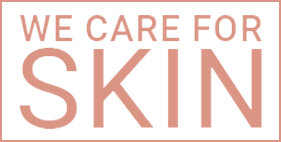Acne is an inflammatory disorder of the skin that affects most people but is more common in teens and young adults. However, acne can persist into adulthood causing many to be self-aware, self-conscious, and grow insecure. Throughout the years, the view of acne as a rite of passage for most teenagers has shifted and is now taken more seriously as a medical problem.
Medicines and treatments have become more focused to combat the physical effects and even emotional effects of acne. Treatments range from accessible over the counter gels and ointments to very expensive procedures. This varied price range makes one question, “does effectiveness come with a higher price?”
Choosing suitable treatment for acne
Having persistent acne breakouts can cause emotional distress and affect someone's day-to-day life. Acne can come in different types and varying degrees of severity, thus knowing when to apply topical creams or seek medical advice is the top priority in dealing with acne.
Mild to Moderate Acne: For most people, their initial action when dealing with mild to moderate acne is to try out OTC products and topical treatments, but the first step in treating acne should always start with an appointment with a dermatologist. Treating mild to moderate acne may also require the use of other agents like antibiotics, so it is important to seek a dermatologist’s advice.
Severe Acne: Patients who have severe acne conditions are often treated with antibiotics, oral medications, use of isotretinoin, and even surgical procedures like intralesional injections or laser treatments. Due to potential side effects, taking medications should always be under a dermatologist’s supervision.
Non-prescription Treatments for Acne
Benzoyl Peroxide: Benzoyl peroxide works as an antiseptic to reduce bacteria on the skin surface. It usually takes at least 4 weeks before you see any improvement and must be applied religiously. The use of benzoyl peroxide does not affect sebum production or the shedding of follicle cells so acne breakouts may return upon stopping the use of it. Topical application may cause common side effects like dry skin, peeling or red skin, or even skin irritation. Benzoyl peroxide gels prices can range from a few hundred pesos to even thousands for branded ones. One of the well-known brands, Benzac, retails at around ₱350 to ₱850, depending on the concentration and size.
Salicylic Acid: Salicylic acid works by dissolving impurities that may clog the pores. This makes it highly effective in preventing acne, as well as treating it. The use of salicylic acid also slows down the production of sebum and reduces the skin oiliness. Salicylic acid does not have any antibacterial properties unlike benzoyl peroxide, but it soothes inflammation and reduces redness.
Sulfur: Sulfur has antibacterial properties that combats bacteria causing acne. This also helps promote shedding of the skin and is believed to help the treatment of acne. It is a gentle topical treatment that works the same way as benzoyl peroxide and salicylic acid. Sulfur is one of the cheapest options with most sulfur soap brands retailing at ₱50 to ₱55 price range.
Topical Retinol: Retinol is a popular ingredient in OTC skin care products and is part of the family of compounds named retinoids. Although retinol and retinoids are similar and work the same way by exfoliating the skin to remove dirt, dead skin cells, and oil, tretinoin is a more concentrated ingredient thus, having more drastic results but with more severe side effects. Retinol is available in different forms such as gel, cream, oil, and serum. Price ranges from a few hundreds to thousands depending on the brand and concentration.
Prescription Treatments for Acne
Oral Antibiotics: The use of antibiotics systemically (orally) should only be used in the shortest time possible as prolonged use could encourage resistance. Tetracyclines (minocycline or doxycycline) is usually the first choice in oral treatment for moderate to severe acne conditions, with side effects such as sun sensitivity. Like any other oral drugs, these antibiotics can interact with other drugs and conditions, so it must only be taken on a case-to-case basis and under a dermatologist’s supervision. Doxin and Minocin retail at ₱85 to ₱95 per capsule.
Isotretinoin: Isotretinoin is the gold standard when it comes to acne treatment. It is generally prescribed for the treatment of severe cystic acne or when acne is not responding to other agents. This works by decreasing the sebum production, reducing proliferation of acne-causing bacteria, normalizing skin hyperkeratinization, and reducing inflammation. Although it is highly effective, isotretinoin can have serious side effects especially for pregnant women and should never be used if pregnant or lactating.
There are several FDA-approved isotretinoin brands in the Philippines.
|
Brand |
Dosage Available |
Price* |
|
Acnetrex |
10 mg 20 mg |
₱45/capsule; ₱1,509/box of 30s ₱82.50/capsule; 2,475/box of 30s |
|
Acnoin |
10 mg |
₱ 1,999.00/box of 30s |
|
Isotron |
10 mg |
No data available |
|
Isonoin |
10 mg 20 mg |
No data available |
|
* Data from MIMS Philippines, retail price may vary. |
||
Treatment with isotretinoin can last from 6 weeks up to 20 weeks depending on different factors and treatment decisions must always be consulted with a dermatologist. It can be costly compared to other treatment options, but the results can be highly favorable.
Other Treatments for Acne
Dermatological Procedures: Procedures such as laser surgery and chemical peels are also available. Laser procedure uses a high-intensity pulse light which kills bacteria that causes acne, reduces inflammation, and helps the skin with rejuvenation. Chemical peels gently exfoliate superficial skin to help dry out acne and reveal a healthier skin layer. Depending on the clinic, sessions could cost from ₱1,500 - ₱3,500 depending on the procedure.
In conclusion, acne treatments, either prescribed or not may cost a great amount of money, time, and effort, but having an understanding on the right approach of treatment and care will provide satisfactory results.
References
Baldwin, H.E. & Marson, J.W. (2019). An overview of acne therapy, part 1: Topical therapy, oral antibiotics, laser and light therapy, and dietary interventions. Dermatologics Clinics, 37(2), pp. 183-193. https://doi.org/10.1016/j.det.2018.12.001
MIMS Philippines. (2022). Isotretinoin. https://www.mims.com/philippines/drug/info/isotretinoin
Watsons Philippines. (n.d.). Online pharmacy (Price checking). https://www.watsons.com.ph/c/online-pharmacy


